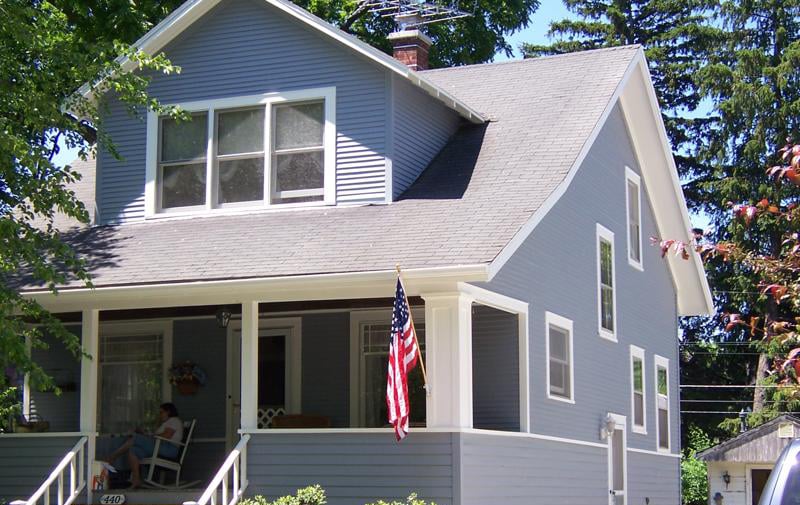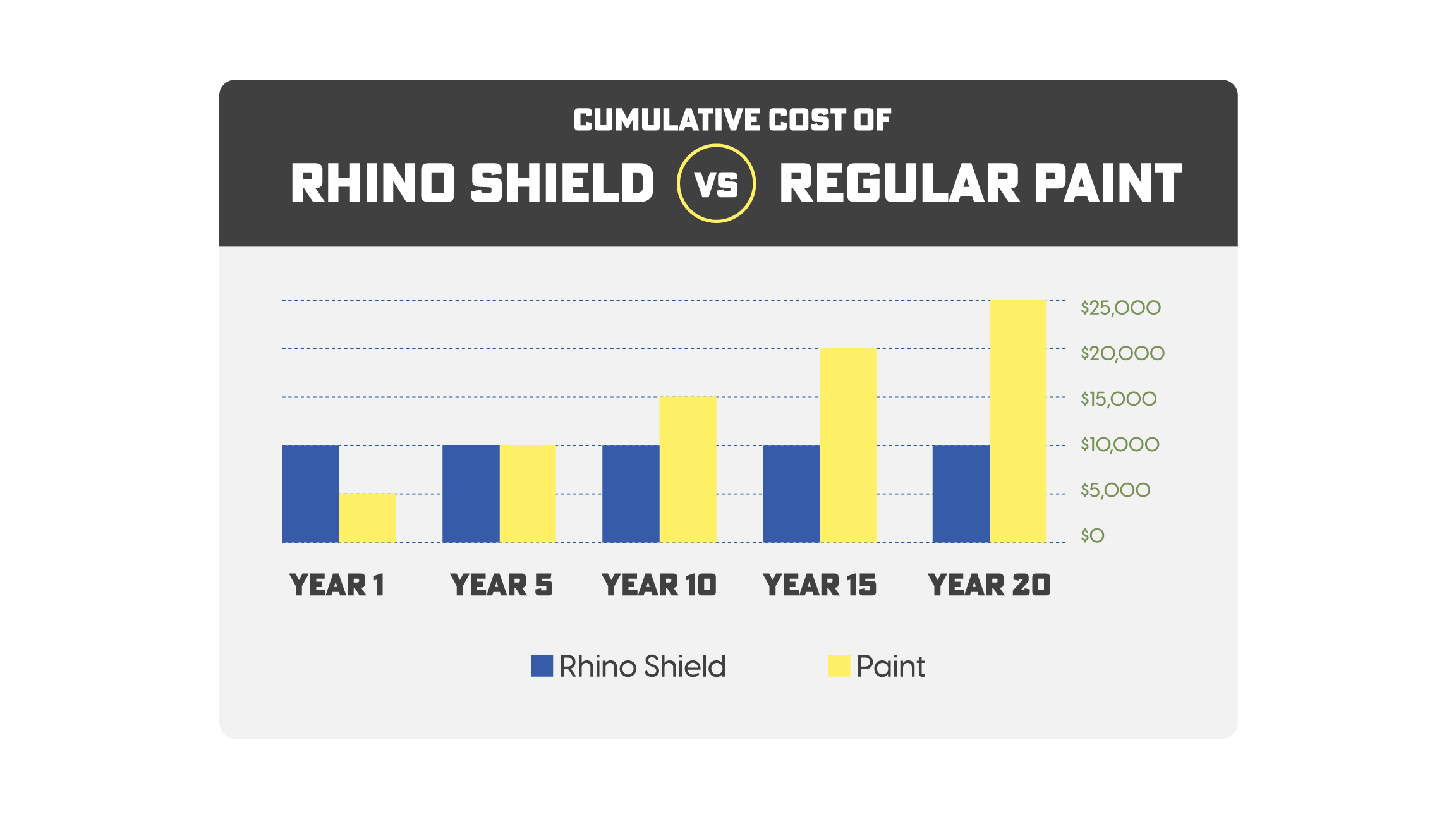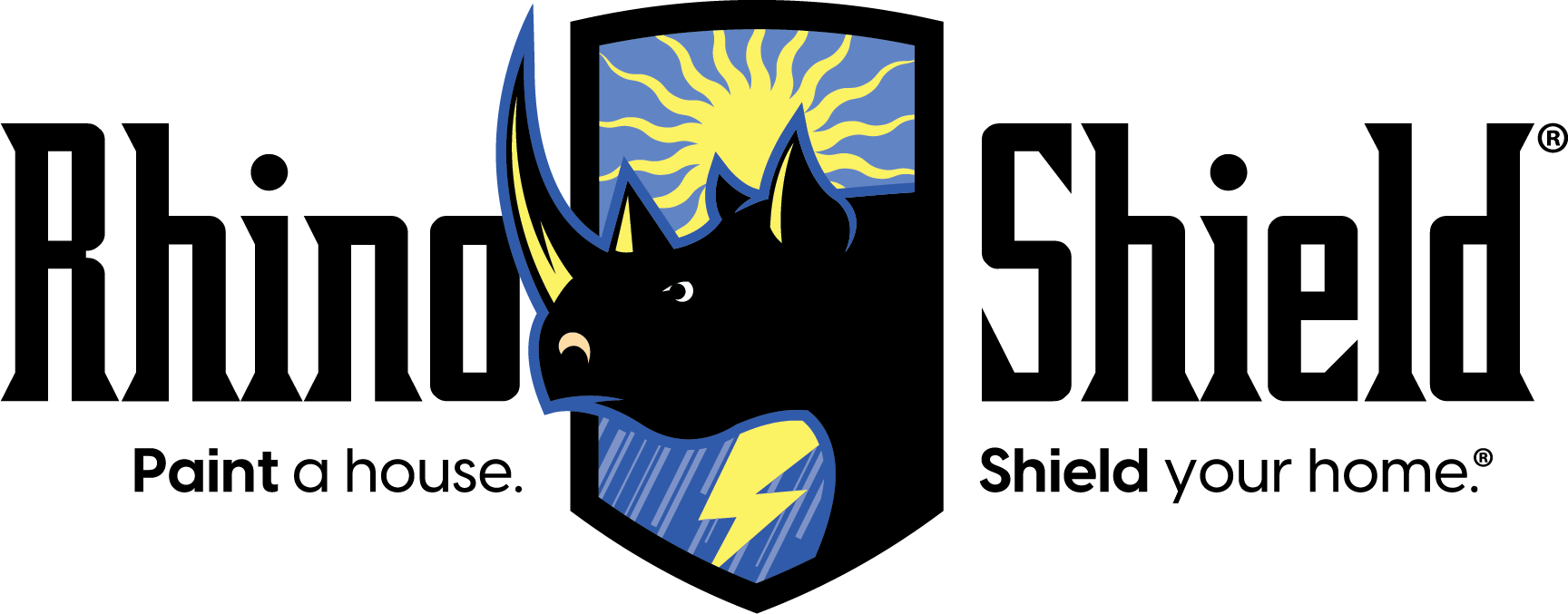
In the realm of home improvement, the evolution of exterior paint has undergone significant transformation over the years. Once dominated by lead-based paints, the industry has since transitioned away from these harmful formulations due to their detrimental effects on both human health and the environment. However, the typical alternative presents its own set of challenges, primarily in terms of durability and longevity.
Every year at Rhino Shield, we’ve coated the exterior of thousands of homes. Our customers often ask, “How can I get out of the frequent repainting cycle?” and “How do I know if my coating is truly long-lasting?”
We’ll answer these questions honestly. It’s also important that we are upfront with our goal to not demonize traditional paint. We acknowledge that most water-based, latex paint is affordable and effective, and is a good choice for many. This article serves to inform those seeking a paint that will last considerably longer than most products on the market.
Why Did We Stop Using Lead Paint?
Lead paint used to be a dominant option in the painting marketplace for its inexpensiveness and longevity. However, lead in any form is very harmful to people and the environment. In the early 1970s, the Lead Paint Act was initiated, banning lead paint usage. Because of this, the industry had to move to alternatives. However, especially early on, these alternatives were far worse in terms of durability and longevity.
Even today, the most predominant type of paint—latex paint—only lasts for about 5 – 7 years max. In some regions, it can start deteriorating in as little as 3 years. This creates a cycle of having to constantly repaint. Not only is it a huge hassle, but over the years, you’ll end up spending more money than if you had gone with a truly protective coating that guards against the elements from the start.
Why Aluminum and Vinyl Siding is Less Popular Today
In response to the shortcomings of traditional paint, the home improvement sector has continually sought alternatives to break free from the repainting cycle. Aluminum siding emerged as one such alternative, aiming to mimic the appearance of wood. However, its drawbacks rendered it less than ideal for many homeowners, including:
- Susceptibility to chalking.
- Prone to denting.
- Doesn’t do a great job of mimicking wood—still looks metallic/tinny when used as siding.
- Heats up easily, which will increase your A/C energy costs.
Vinyl siding soon followed as a cheaper alternative to wood. Like aluminum siding, it lasted for an extended period, boasting improved longevity compared to paint. It also mimicked the appearance of wood better than aluminum siding. However, its association with low-end homes and its propensity to conceal underlying damage has led to its decline in popularity, to the degree that many people associate it with basic track housing. This is particularly the case in upscale neighborhoods.
People have been trying to get out of the frequent repainting cycle for over 60 years and are constantly moving toward trying to resolve this. Today, many people are considering protective coatings that last much longer than regular paint and provide many more benefits. As a matter of fact, many homes opt to get a protective coating over their aluminum or vinyl siding because these materials will start to look bad after a while. Coatings are especially beneficial for aluminum siding, as they can:
- Lower the surface temperature of the material.
- Make it look more like wood.
- Change the color.
- Gets rid of the chalking.

The Benefits of a Protective Exterior Coating System
Traditionally, protective coatings are thicker than paint. This is because they have more solids to them which adds to their durability and longevity. Think of wooden planks. Which would be harder to break, one plank or four planks stacked on top of each other? Of course, the answer is the latter. Protective coatings also last longer because they have advantages like UV reflectivity and water repellence, which prevent them from getting damaged by the same elements that wear down regular paint significantly.
For example, when you look at coatings on the inside of a pipeline, you don’t talk of painting it but applying a protective coating system that will aid its integrity. The same concept applies when painting bridges. It’s important to have an option that will not only improve aesthetics but help keep your home in pristine condition.
Protective coatings are always sold as a system, with at least a primer and a topcoat application. This ensures exceptional adhesion so that the coating lasts. You’ll also even see three coats with the inclusion of a midcoat. Many traditional latex paints sold today come in an all-in-one paint + primer mix. While the primer does function, it oftentimes does not provide near the level of adhesion that a separate primer and topcoat combination provides.
The Importance of Testing
Two examples of some of the leading exterior protective coatings are our Rhino Shield product and MasterProtect. While most often, Rhino Shield is favored in the residential side of the market, MasterProtect offers great competition for commercial high-rise buildings. What these two coatings have most in common is their great independent, third-party lab tests and ASTM test results. These evaluations prove their efficacy.
When you are painting your house, you want a paint that will not only last so that you can save hassle and money in the long term but has proven protective capabilities that will guard the most important asset you’ll ever invest in—your home. This is why we stress to ask your painting provider for product test results. No matter what claims businesses make, objective data cannot lie. As a matter of fact, many architects and engineers who construct new buildings will specify a quality coating and require it to hit certain testing benchmarks.
Conclusion
The shift away from traditional exterior paint towards protective coatings represents a paradigm shift in the home improvement industry. With an emphasis on durability, longevity, and proven protective capabilities, these coatings offer a compelling solution to the perennial challenge of maintaining a home's exterior aesthetics while minimizing the need for frequent repainting.
As homeowners increasingly prioritize value and longevity in their investments, the demand for high-performance coatings is expected to continue growing, shaping the future of exterior surface protection.
If you’re interested in getting a free, no-obligation quote for our Rhino Shield protective coating, fill out the form below.

